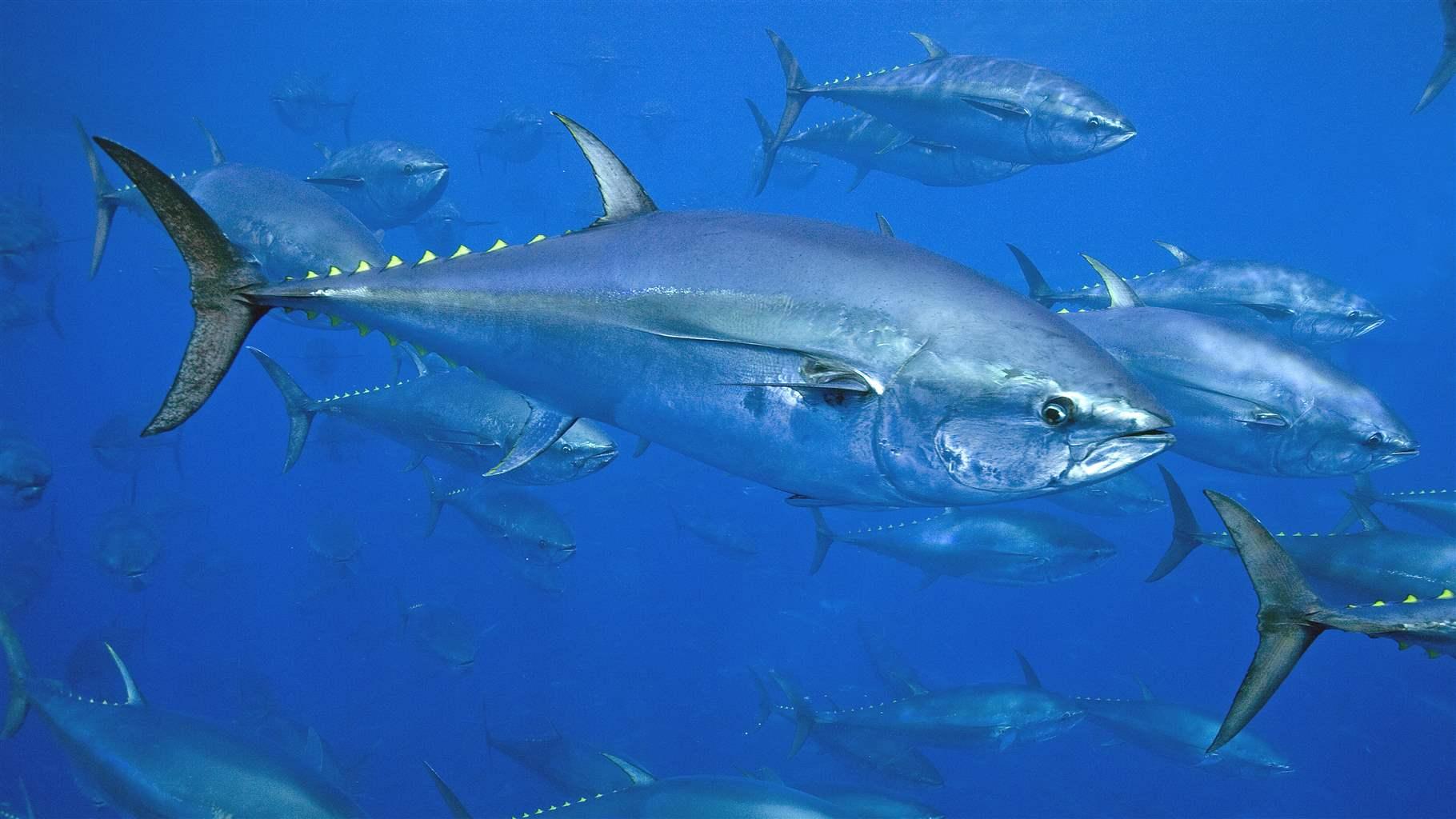Conserving the World's Animal Species
"The celebration surrounding the annual Pacific bluefin auction hides how deeply in trouble this species really is."
"Its population has fallen to less than 3.5 percent of its historic size and overfishing still continues today."
"It's time for countries, including Japan, to support Pacific bluefin recovery, fund the necessary science, and commit to enforcing fishing limits, to ensure that there will still be bluefin left to auction."
Jamie Gibbon, associate manager, global tuna conservation, The Pew Charitable Trusts
 |
| Kiyomura Co. President Kiyoshi Kimura (C) cuts a fresh bluefin tuna at one of the company’s Sushi Zanmai sushi restaurants after the year’s first auction at Tsukiji Market on January 05, 2019 in Tokyo, Japan. Kiyomura Co. bid for the highest priced tuna weighing 278 kilogram (612lbs) for 336 million yen ($3.1m) at the year’s first auction. |
Japan hasn't got a sterling reputation as a steward of the aquatic creatures of the sea, given its unrestrained appetite for endangered species and its challenges to those who express a need to conserve the worldwide whale population. The Japanese public's appetite for various types of fish is understandable to a point as a maritime nation, a sequence of three islands in the Pacific. In its refusal to reign in its enthusiasm for wholesale capture of fish species it rivals China.
The immense population of China is wedded to exotic cuisine dependent on exotic animal parts, a threat to the existence of large-game animals throughout Africa, indeed everywhere in the world. Chinese traditional medicinal formulae as well, dependent on body parts of various animals take their toll on the existence of species known to be teetering close to extinction. At a time when much of the world is becoming aware of responsibility to the welfare of other species on Earth, persuading nations to preserve their native animal species is hampered by poaching and illegal gathering.
Bluefin tuna is valued in sushi restaurants worldwide, but of course in particular in the country where sushi is a national dish. Bluefin tuna stocks are plummeting, however, the result of unrestrained fishing for the valuable fish. The Pacific Bluefin tuna (Thunnus orientalis) is listed as "vulnerable" according to the British-based International Union of Conservation of Nature, in their Red List of Threatened Species, in recognition of its decreasing population.
 |
Japan and other governments had agreed in 2017 to observe strict quotas and restrictions on fishing for the purpose of attempting to rebuild stocks from twenty percent of historic levels by 2034. Fishing methods in Japan's Aomori prefecture in the small town of Oma with its national reputation for the quality of its tuna catch eschew trawling for traditional manual fishing.
Those fishermen found tuna harder to find than previously, and their catches were on the low end leading to fears the Oma tuna might disappear from Japan's sushi bars. Japanese fishermen protested the new quotas, leading Japan and other countries lobbying for higher catch quotas for the coming year of 2019, only one year into the new, agreed 16-year recovery plan.
There were reports of Japanese fishermen discarding and failing to report dead Bluefin in avoidance of exceeding their quotas. Pacific Bluefin tuna's maximum length of close to three meters at maturity, with a weight topping 550 kilograms identify it as a very large fish. As an ocean predator they have been spoken of as "twice the size of a lion and faster than a gazelle", built with a torpedo-like hydrodynamic shape, according to the World Wildlife Fund.
Their two main breeding grounds off the coast of Japan leave most of the tuna in the western Pacific their entire lives, from Sakhalin Island in Russia in the north to New Zealand in the south. Other tuna reaching one to two years of age undertake a 11,000-kilometre migration to waters off California and Mexico's Baja Peninsula, rich with food for the tuna. After two to four years they return to spawn where they began their life, in the western Pacific.
Before reaching maturity, fishermen mostly from Japan, South Korea and Mexico often take those fish resulting in undermining the population. These fish are so valued in Japan that a huge bluefin sold for a record $3.1 million at Tokyo's fish market this week -- the buyer Kiyoshi Kimura, owner of the Sushi Zanmai restaurant chain -- at the firs auction of the year; a price ten times higher than the price paid at last year's auction.
 |
Labels: Bluefin Tuna, Cuisine, Japan, Species at Risk

<< Home